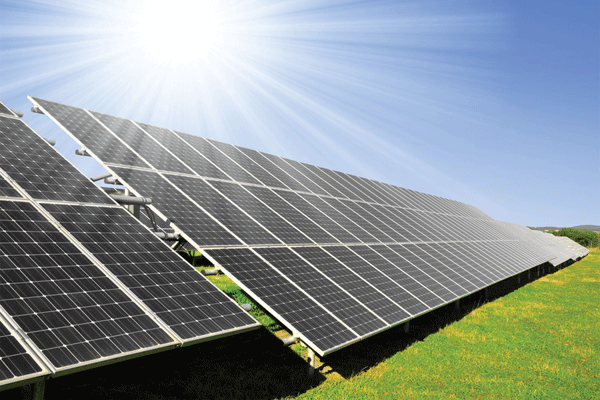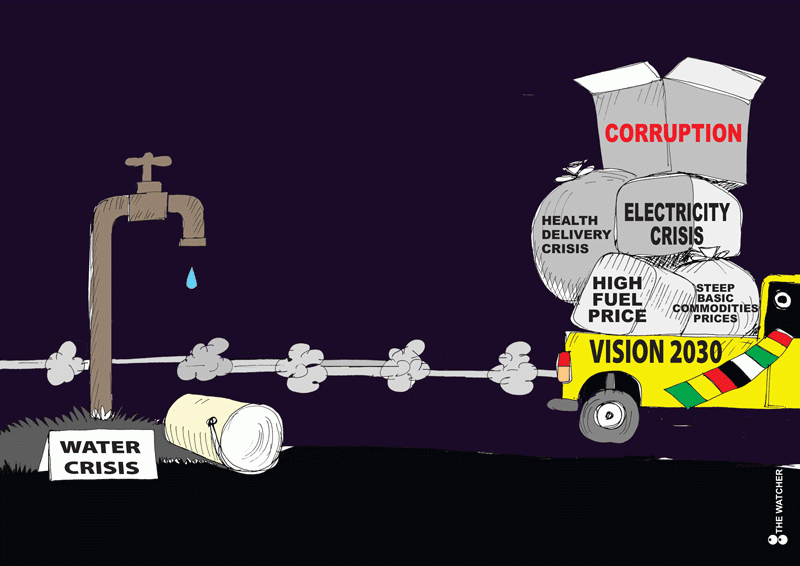
BY RUKUDZO MANGOMA
As technological advances continue to grow in leaps and bounds, demand for electrical energy, be it residential or industrial, also grows commensurately.
Answers have been high and low and eureka! Scientists believe they have found the magical solution to be in solar, wind and batteries, but is this true? Are we sure we have found the answer in ending our power woes?
They are said to be the long-awaited answer towards ending blackouts and load-shedding Zimbabwe and the rest of the world are experiencing, but this could not be further from the truth.
Not to come as the bearer of bad news, but from my research these sources of energy are more problematic than anything else.
Achieving Sustainable Development Goal number seven (SDG 7) from my position seems to be a pipe dream.
Shortages of electrical energy arise from climate change, particularly anthropogenic activities.
From deforestation, industrial emissions and mining, mankind is producing carbon emissions that are weakening the ozone layer and ultimately letting in large amounts of harmful solar radiation that negatively alter long-term predictions of weather conditions such as temperature and precipitation, to name but two.
- Chamisa under fire over US$120K donation
- Mavhunga puts DeMbare into Chibuku quarterfinals
- Pension funds bet on Cabora Bassa oilfields
- Councils defy govt fire tender directive
Keep Reading
Very influential people like politicians and celebrities are being thrown into the mix, to make these sources of energy more acceptable to the public, however, I feel pity for people being subjected to these views as I was one of them.
Thus, to awaken my kinsmen, I made this daring decision to challenge this theory and enlighten people that not all information that we gather is true, truth is twisted to serve a certain agenda.
A glance at renewable energy sources and you will be surprised at how little of a difference they make.
What was not mentioned by scientists is that sources of energy have limits which cannot be exceeded.
The maximum rate at which solar panels can be converted into energy is at 26% and wind turbines have a conversion rate of 45%. Modern technology is unable to provide desired results that will bring about development.
The conversion rates mentioned above show just how wasteful and non-profitable renewable energy sources are if taken as a business venture. Why then should countries like Norway invest billions of dollars in renewable energy technology that wastes 67% and 55% of all solar and wind energy that the planet receives, respectively?
The rate of conversion decreases with change in season. For example, if it is winter, solar power conversion rates may decrease by half of its maximum conversion capacity.
Being a development practitioner, I believe that the investment funds being poured towards renewable energy should be directed at the root cause of climate change, that is poverty.
Lack of basic necessities such as food insecurity, poor healthcare and poor quality education, drive people to burn more cheaper and locally available dirty fuels like coal and wood.
This makes achieving zero emissions more and more difficult.
The question regarding storage has still not been given a convincing explanation.
Most renewable energies like solar cannot be stored on a large, industrial scale.
Even if one opts for batteries, they still will not be able to adequately cater for the world’s energy requirements. Consider the worlds biggest battery in Nevada, the United States.
It takes 500 years to fill it up with enough energy to supply one day’s worth of America’s total energy requirements.
This is probably the reason why, combined solar and wind power make up just 3% of the world’s total energy, even after the provision of billions of dollars in subsidies.
With the demand for energy growing as population grows and the recent COVID-19 pandemic that made people work from home, power usage was extremely high because of the powering of computers, heaters, stoves, all of the above being high-energy consumers.
Moreover, renewable energy is actually detrimental to the environment. Most scientists overlooked the fact that almost all materials needed to make renewable energy technology, is made from non-recyclable materials.
World leaders have failed to see the increase in mining activities that will result in the destruction of forests, wetlands and animal species.
Mining activities will increase because of the search for “rare” earth minerals like cobalt, copper and iridium. These materials are going to come from massive mining projects which destroy the environment.
Australia’s Institute for Sustainable Futures (AISF) cautions that: “A global ‘gold’ rush for energy materials will take miners into remote wilderness areas that have high biodiversity because they have not been disturbed”.
Besides environmental degradation, the topic regarding energies required for processing these materials has been avoided for some time now. Massive amounts of energy used to process these solar panels and wind turbines is drawn from energy sources like thermal power, a contributor to greenhouse gases.
Then there is the waste produced from renewable energy.
Batteries and solar panels have a short lifespan of 20 years compared to conventional energy machines which survive twice as long.
With the current advocacy for green technology, the International Renewable Energy Agency (IREA), calculates that by 2050, discarded worn out solar panels will constitute double the tonnage of today’s plastic waste.
This will be a whole new environmental challenge on its own.
Another negative effect of renewable energy is an increase in unemployment.
With most conventional power stations employing large numbers of people, a sudden shift to solar or wind energy will witness huge job cuts because photovoltaic and wind farms require little supervision and maintenance.
Imagine if Hwange Thermal Power Station were to go green, given the number of people being employed by the thermal power station, what would become of the lives of the town residents?
Poverty will rise exponentially, triggering a chain reaction of other social problems such as high crime rates, increased prostitution, hunger and spreading of diseases.
So, before humanity launches history’s biggest increase in mining, digging up millions of acres of pristine areas and creating huge waste problems, we should take a step back and explore our inexhaustible supply of hydrocarbons. The technological revolution is making it easier to acquire and clean hydrocarbons everyday.
Automobile companies such as Honda that are spearheading this alternative route have managed to solve one problem earth is facing, water shortage. When hydrocarbons are combusted, the by-product is water.
Water is a scarce but indispensible resource, especially in Zimbabwe. We use water to cook, irrigate, and prevent health hazards. Hydrocarbons allow us to tackle two SDGs.
As I leave you to ponder on my view, next time when a person says wind, solar and batteries are the magical solutions for all our energy needs, ask them about the impact it will have on the environment.











